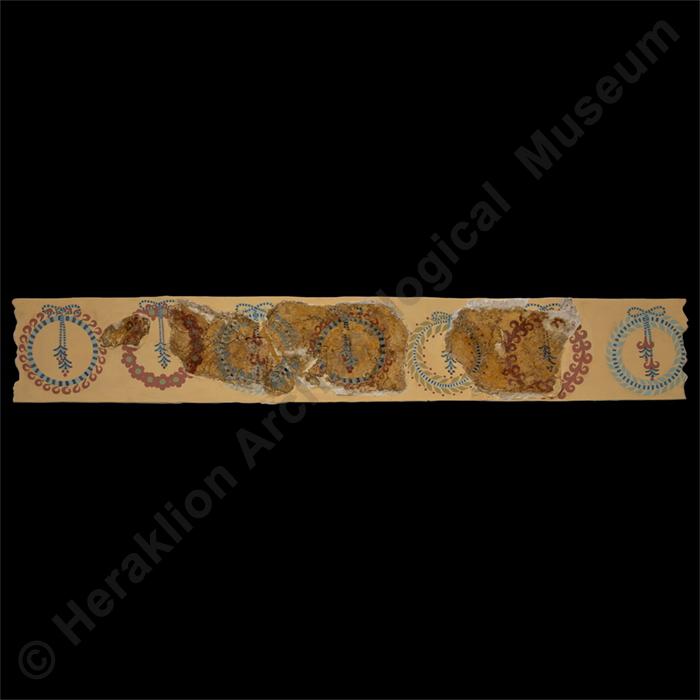Fresco of the Garlands
ΑΑ00001
Plaster
Fragmentary. Conserved by P. Moschos and reconstructed by Jeff Clarke
19 Χ 108 cm.
Knossos
Stratigraphical Museum Excavation, North House
Late Bronze Age, Neopalatial period, Late Minoan IB period:
1500-1450 BC:
Gallery:
XIIICase:
144Exhibition thematic unit:
Minoan wall paintingsThe world of nature
Description
The Fresco of the Garlands adorned the upper frieze of a room in a house west of the palace of Knossos which was destroyed by fire in Late Minoan IB, circa 1450 BC. Five wreaths have been restored, each with a diameter of approximately 13 cm, decorated alternately with leaves and flowers. Although these cannot be identified with certainty, it is believed that the following species are seen in each wreath, based on the colour and the number of petals and stamens. Peter Warren proposes five possibilities for the bright red flowers in the first garland: Anemone coronaria, Ranunculus asiaticus, Adonis annua, Papaver rhoeas and Rosa gallica. In the second the most obvious identifications are ivy or dittany leaves. The third garland consists of half-lilies, perhaps Lilium chalcedonicum, while the fourth has myrtle leaves and berries, and the fifth red lilies again. Smaller fragments which have not been restored are thought to depict blue flowers and wild roses or perhaps rockrose (Cistus creticus), one of the most widespread plants of the Cretan countryside. All the garlands are fastened with a bow to a fixed support, thus indicating that they represent actual garlands, which were either hung on walls as decorative symbols of flowering and fertility, or offered as gifts at ceremonies associated with fertility and the renewal of nature, as in later times.Read MoreBibliography:
P. Warren, "The Fresco of the Garlands from Knossos", in P. Darcque and J.-C. Poursat (eds), L'Iconographie minoenne. Actes de la Table Ronde d'Athènes (21-22 avril, 1983) (BCH-Suppl. XI) (Paris, 1985), 199-207.Author:
K. A.Photographs' metadata
